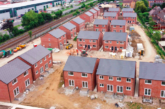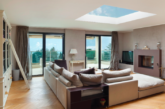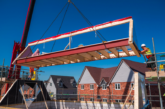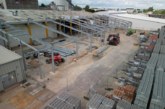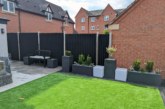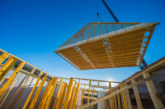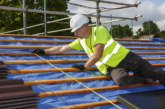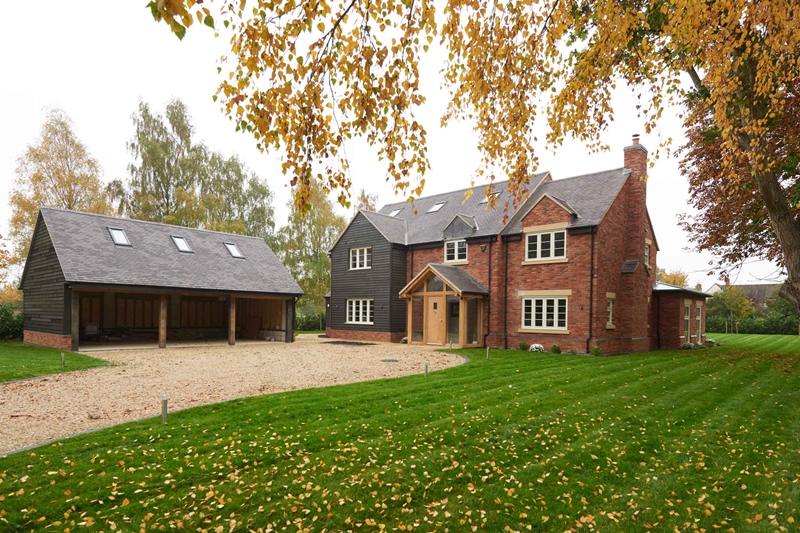
With the roof representing a large proportion of the external appearance of a new home, getting the roof tile specification correct is important.
PHPD chats with Alex Patrick-Smith, Managing Director of clay roof tile manufacturer Dreadnought Tiles, to find out more about what to consider, the latest trends and design advice.
Q: What are the advantages of using natural roofing materials, such as clay roof tiles?
Housebuilders and developers often specify natural clay roofing materials in order to add character, kerb appeal and therefore more value to their properties.
However, the term ‘natural’ can mean different things. At Dreadnought, we use the term to describe subtle variations in the clay colour, which are derived solely from changes of temperature and atmosphere within the kiln during the firing process. No two tiles are exactly the same and the different tones you can see within each tile, when combined, add immense character to any roof.
Within the broader industry, however, the term ‘natural’ is often used to describe clay tiles that have had artificial stains or coloured sands applied to their surface in order to generate a wider choice of colours, or indeed to simply denote the fact that they have been manufactured from clay.
Q: Can the specification and the use of clay tiles assist in meeting conservation considerations or planning requirements?
Clay roof tiles can certainly help housebuilders meet Local Authority conservation and planning requirements provided that they are in keeping with the surrounding built environment.

Handmade tiles, which are individually formed by hand as the name suggests, are usually stipulated in conservation areas, as their idiosyncratic shape and character mirrors that of roof tiles found on old buildings.
Volume manufactured machine made tiles, whilst a more economical option for large modern developments, as yet fail to faithfully replicate the quirky characteristics of older looking roofs. However, in some cases, ‘handcrafted’ (or ‘rustic’) tiles, which are basically distressed machine-made tiles designed to mimic the appearance of handmade tiles, can be a good halfway measure depending on the individual Conservation Officer and area.
The texture of the tiles is also important. Sandfaced tiles, which have a softer look and can quickly take on an aged and weathered appearance as mosses and lichens adhere more readily to their surface, are often specified in conservation areas. Smoothfaced tiles, which were traditionally used more in urban areas, have cleaner and sharper lines making them a popular option on more contemporary looking developments.
Another important aesthetic distinction is whether the camber (or curvature) of the tiles should be single or double. Single cambers are the traditional shape seen on many of our historic buildings, whilst the double camber, which gives a ripple effect at the tails of the tiles, was originally developed for concrete tiles and introduced in the 1970s as an ‘innovative’ development in clay.
Q: Does the company offer design advice or assistance in the selection of appropriate materials?
At Dreadnought Tiles we work closely with housebuilders on all aspects of roof tile specification, from advice on design and colour combinations through to planning, technical and aftersales support.
We determine the correct quantities required directly from the builder’s drawings. That way, we can also pick up any issues that may impact on the use of plain tiles and suggest appropriate solutions at an early stage.
To ensure the right tile selection is made, our representatives will take sample tiles to the site and lay them alongside the bricks or other cladding materials. Where a combination of different colours is required, we can work through the possibilities by building panels with various mixes in different proportions until we get exactly the right look. We believe that naturally coloured tiles will blend more easily, avoiding the high contrast that can make the overall mix look poor.
It is also important that the roofing contractor mixes the tiles well as he lays them on the roof to avoid patching.
Q: How well do clay tiles incorporate any special details and/or roofing features which might be required as part of the design?
Plain clay tiles traditionally have a small size format of 265 x 165mm. This size can be used comfortably on curved roof sections, as well as allowing for a lot of flexibility of design to introduce details such as sprockets, conical elements or eyebrows.
There are all sorts of options, such as hips and valley tiles, ridge tiles and ornamentals, which when chosen carefully can greatly enhance a roof, giving added kerb appeal to a development.
Q: Are there any specific fitting considerations that housebuilders should be aware of if clay roof tiles are specified?
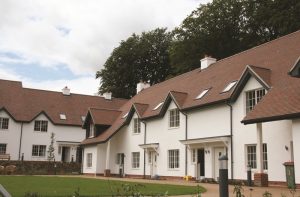
Housebuilders should be aware that the current building standard BS 5534 requires a minimum 35 degree pitch for a roof with plain clay tiles. Interlocking clay tiles can be used below this pitch, but it is advisable to refer to the manufacturer if shallow pitches are being considered to ensure that they are specified correctly.
Clay roof tiles should be mixed from at least three pallets, so that any variations between pallets are evened out to avoid patching.
Recent changes to building regulations mean that all ridge tiles should be mechanically fixed. Various systems are available, including a simple clip bridging two ridge tiles, which is secured to the ridge tree.
Care should also be taken to ensure appropriate ventilation of the roof to avoid condensation in the roof space.
Q: Are clay roof tiles sustainable?
Clay roof tiles are considered to be a highly durable, long lasting and sustainable roofing option, which can be re-used as product or re-cycled as aggregate. In fact second hand tiles that have been used on buildings for over 50-100 years often sell for more than new tiles on the second hand market.
Their long life and ability to be re-used on other buildings means that the amount of energy consumed during their manufacture is spread over a longer time period, thereby reducing their embodied energy, which is the most relevant measure of sustainability.
Transport is also a key issue in sustainability and keeping transport energy to a minimum supports the argument for buying local. It’s a good idea to ask your supplier to provide evidence of where the tiles are made.
Q: What are the current trends in clay roof tiles?
Currently there is a trend towards using large format clay tiles, which you see on developments mainly from the national housebuilders.
Although larger tiles may be cheaper to manufacture and lay and they can be used on lower roof pitches, they do not have the same attractive variation in colour and texture that you get with a more traditional plain clay tile.
Many forward thinking regional builders recognise the value of offering customers a more individual and characterful look that can come with a traditional machine made, handcrafted or handmade plain clay tile.
Alex Patrick-Smith is Managing Director of Dreadnought Tiles. www.dreadnought-tiles.co.uk

